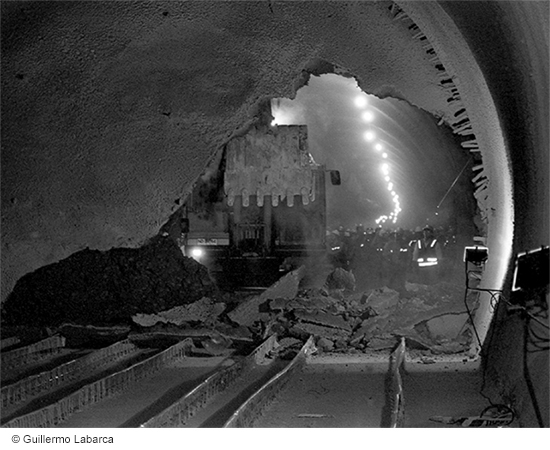Photographers interest us… but not always
© Guillermo Labarca and Pepa de Rivera
 Contrary to what we said in the last issue, in which we explained why there are photographers who bore us, we have to say that sometimes we also encounter photographers who do move us, who reveal parts of reality that normally go unnoticed, who use the same photographic techniques as the photographers we consider to be inferior, but in adequate measures, to convey something they saw, felt or thought. If this were not so, we wouldn´t be publishing this magazine, which is already at its 42nd issue. Anyone revising the different issues published from November 2008 up to this day can conclude that there is a significant amount of photographers who are able to tell original stories, who can transmit emotions, feelings and ideas using photography without being slaves - even without making concessions - to fashions or peer pressure. While editing this magazine, we have been constantly in search of photographers who look for a personal way of expression.
Contrary to what we said in the last issue, in which we explained why there are photographers who bore us, we have to say that sometimes we also encounter photographers who do move us, who reveal parts of reality that normally go unnoticed, who use the same photographic techniques as the photographers we consider to be inferior, but in adequate measures, to convey something they saw, felt or thought. If this were not so, we wouldn´t be publishing this magazine, which is already at its 42nd issue. Anyone revising the different issues published from November 2008 up to this day can conclude that there is a significant amount of photographers who are able to tell original stories, who can transmit emotions, feelings and ideas using photography without being slaves - even without making concessions - to fashions or peer pressure. While editing this magazine, we have been constantly in search of photographers who look for a personal way of expression.
As it happens, the authors we published in this issue are an example of this editorial strategy. (We mention these authors because they are in this edition of the magazine, but it applies to any photographer in all other issues.) Let us go in order; let us begin with Luis Vioque: exquisite and subtle photography, attained by depriving the image of all superfluous information. He is close to Japanese art, which is characterized by showing the fleeting character of things, linked to an intense emotional connection with its surroundings. In the images shown here by Luis Vioque, empty spaces play a prominent role, they emphasize every object shown. The widescreen format he uses is undoubtedly the most appropriate one to communicate the way the sees the world that surrounds him.
Julio López Saguar, with a square format and completely different colors, calls our attention towards the poetics of daily life. In his work, we see an interaction between elements we normally see as opposed: poetry and technology. There is an initial call to this interaction in the succinct title of this work; Instagram and Iphone are mentioned – there is nothing more technological, nothing more mundane, nothing more prosaic. But when we open the collection of images we find ourselves with a surprising view of what we see each day. The camera of a smartphone that shows the beauty of daily life… or better still, the photographer who teaches us to look with the phone he uses every day.
Also with a square format, Nicolás Pascarel gives us a glimpse of the impact Cuba had on him. The experience was, undoubtedly, very intense and needs a pronounced color scheme. The sun and colors of Havana need the extreme contrasts we find here. There is a warm and humid atmosphere under omnipresent skies or imposing ceilings that force us to concentrate on what is there, before us: a highly contrasted reality, with hard edges, cutting like the blade of a sharp razor, as if it were enclosed in a capsule, but with windows towards larger spaces.
Margarita Fresco shows us another Cuba and Havana; the one on the day of the Saint Lazarus festivity. To show something in a very direct way she uses the simplest and therefore most direct photographic technique: natural colors, most similar to the photographed object, centered framing, perfectly differentiated figures and backgrounds. This strategy of great simplicity can be tricky as apparently it only shows the surface of reality, that which is accessible to all, however, she is revealing more profound realities as she is illustrating calls to social solidarity (the meaning of begging), which is possible thanks to the persistence of religious devotions in Cuban society, and poses questions about this society and about so many others.
And back to the initial theme, to us photography is just that, a window through which we perceive our surroundings in a way we couldn´t do otherwise.

